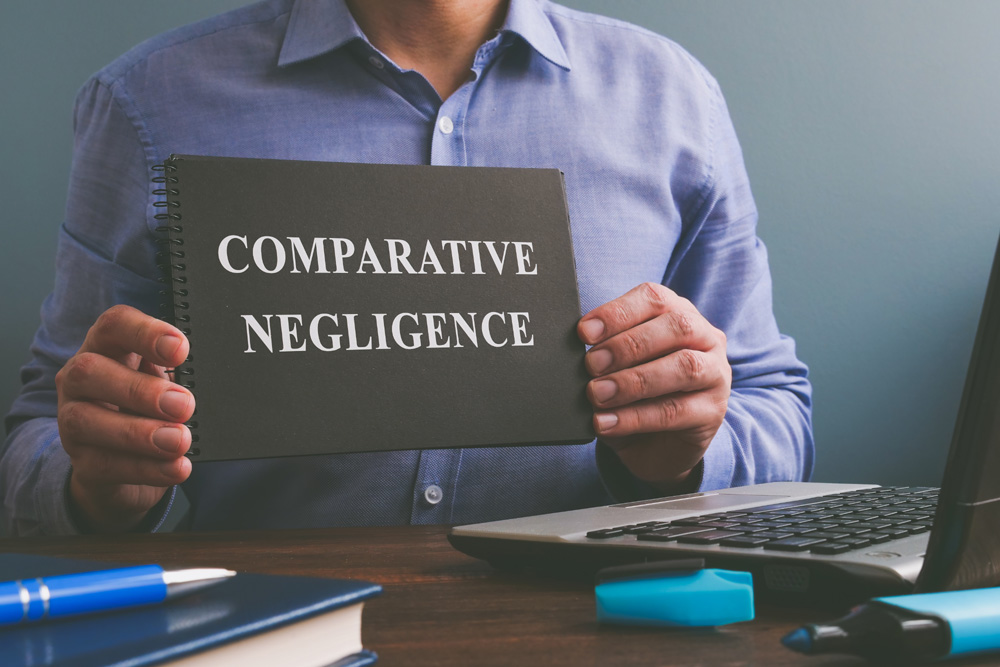After a car accident in New Mexico, determining who was at fault is rarely black and white. Many accidents involve some degree of responsibility from multiple parties. Understanding how New Mexico’s comparative negligence laws affect your case is crucial for securing fair compensation.
At Dominguez Law, we help accident victims navigate these complex legal waters to protect their rights and maximize their recovery, even when they may share some responsibility for the accident.
What Is Comparative Negligence?
Comparative negligence is a legal principle that allows multiple parties to share fault in an accident. Unlike states with contributory negligence laws, where any fault on your part could prevent recovery, New Mexico follows a “pure comparative negligence” system.
Under New Mexico’s pure comparative negligence rule, you can recover damages even if you were partially at fault for the accident. However, your compensation will be reduced by your percentage of fault. For example, if you are found to be 20% responsible for an accident, your compensation would be reduced by 20%.
How Fault Percentages Are Determined
Several factors are considered when assigning fault percentages in an auto accident:
- Traffic law violations by each party
- Statements from witnesses and those involved
- Police reports and accident reconstruction
- Physical evidence from the accident scene
- Expert testimony when available
Insurance adjusters initially make these determinations, but these assessments are often biased in favor of the insurance company. Having an experienced attorney can ensure that fault is fairly assessed.
Common Scenarios Where Comparative Negligence Applies
Comparative negligence often comes into play in situations such as:
- When one driver is speeding, but another makes an improper turn
- Rear-end collisions where the front vehicle stopped suddenly
- Accidents where poor weather conditions contributed
- Situations where multiple drivers made errors simultaneously
- Cases involving poorly maintained roads or vehicles
Understanding how these factors interact is essential for building a strong case and maximizing your recovery.
Insurance Company Tactics
Insurance companies often try to assign more fault to you than is appropriate to reduce their payout. Common tactics include:
- Misrepresenting New Mexico traffic laws
- Pressuring you into giving recorded statements
- Using your own statements against you
- Claiming pre-existing conditions caused your injuries
- Arguing that you could have avoided the accident
Having knowledgeable legal representation can protect you from these tactics and ensure your rights are upheld.
Maximizing Your Recovery When Partially at Fault
Even if you share some fault for an accident, there are strategies to maximize your compensation:
- Gathering comprehensive evidence of the other party’s negligence
- Working with accident reconstruction experts
- Obtaining witness statements that support your version of events
- Documenting all injuries and damages thoroughly
- Having an attorney negotiate with insurance companies on your behalf
These approaches can significantly impact the final determination of fault and the resulting compensation.
Case Example: Partial Fault Still Means Compensation
Consider this example: A client was injured when another driver ran a stop sign, but our client was traveling 5 mph over the speed limit. The insurance company initially claimed our client was 40% at fault, offering a significantly reduced settlement.
After our investigation and negotiation, we successfully argued that our client’s speed had minimal impact on the accident, reducing their fault to 10% and substantially increasing their compensation.
The Importance of Legal Representation
When comparative negligence is a factor, having an experienced attorney becomes even more important. At Dominguez Law, we:
- Conduct thorough investigations to accurately determine fault
- Challenge unfair fault assessments by insurance companies
- Build compelling cases that minimize your percentage of fault
- Fight for maximum compensation even when multiple parties share responsibility
- Provide individualized attention to the unique aspects of your case
Our approach has helped countless New Mexico residents secure fair compensation, even when they shared some responsibility for their accidents.
Protect Your Rights After an Accident
If you have been involved in an auto accident in New Mexico where fault is disputed, do not let insurance companies dictate your compensation. At Dominguez Law, we understand the nuances of comparative negligence and how to build effective cases that protect your interests.
Our team provides compassionate and aggressive representation to ensure you receive fair treatment under the law. We handle all aspects of your case while you focus on recovery. Contact Dominguez Law today at 505-850-5854 or through our contact form to schedule a free consultation and learn how we can help you navigate New Mexico’s comparative negligence laws to secure the compensation you deserve.


